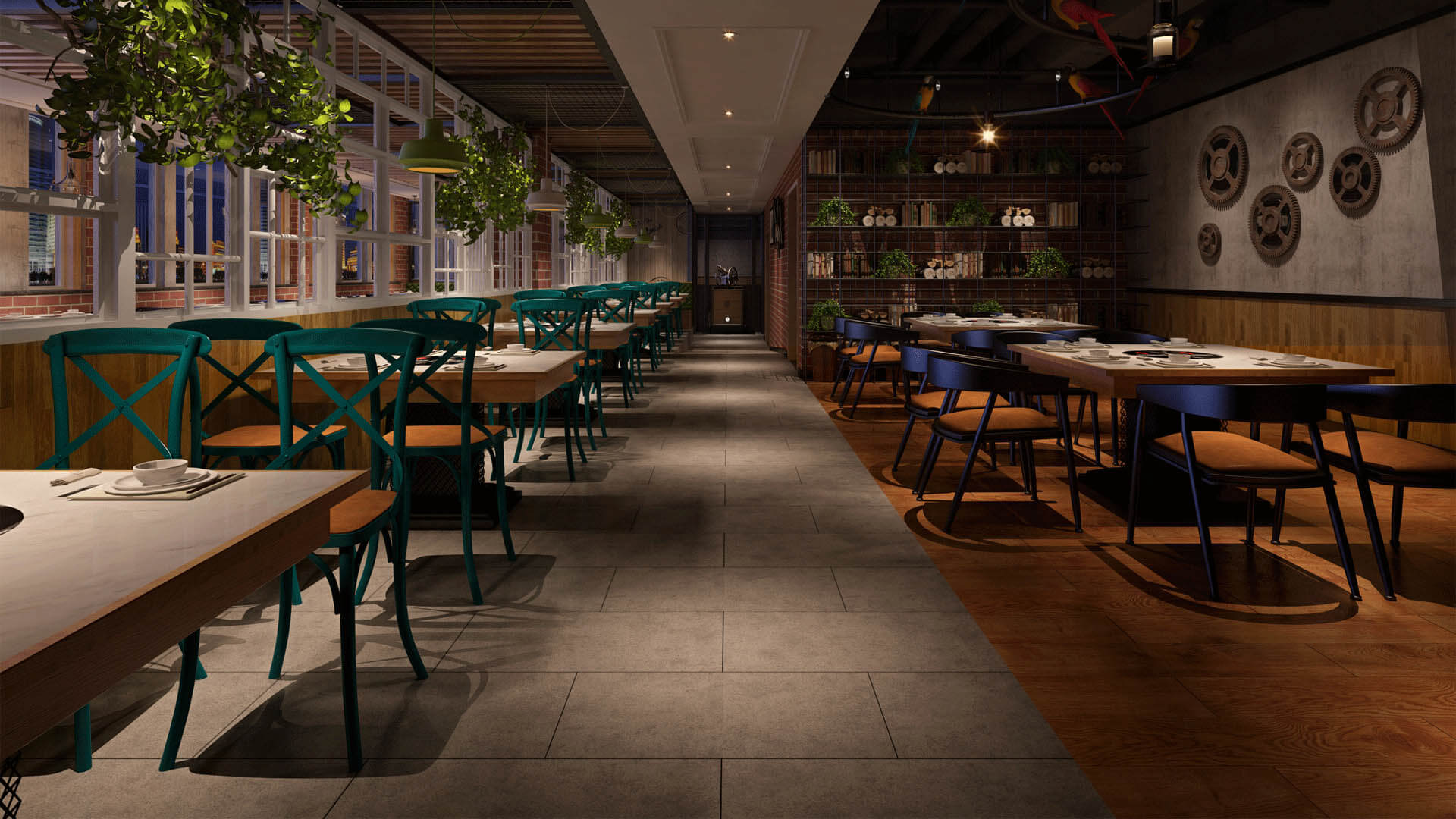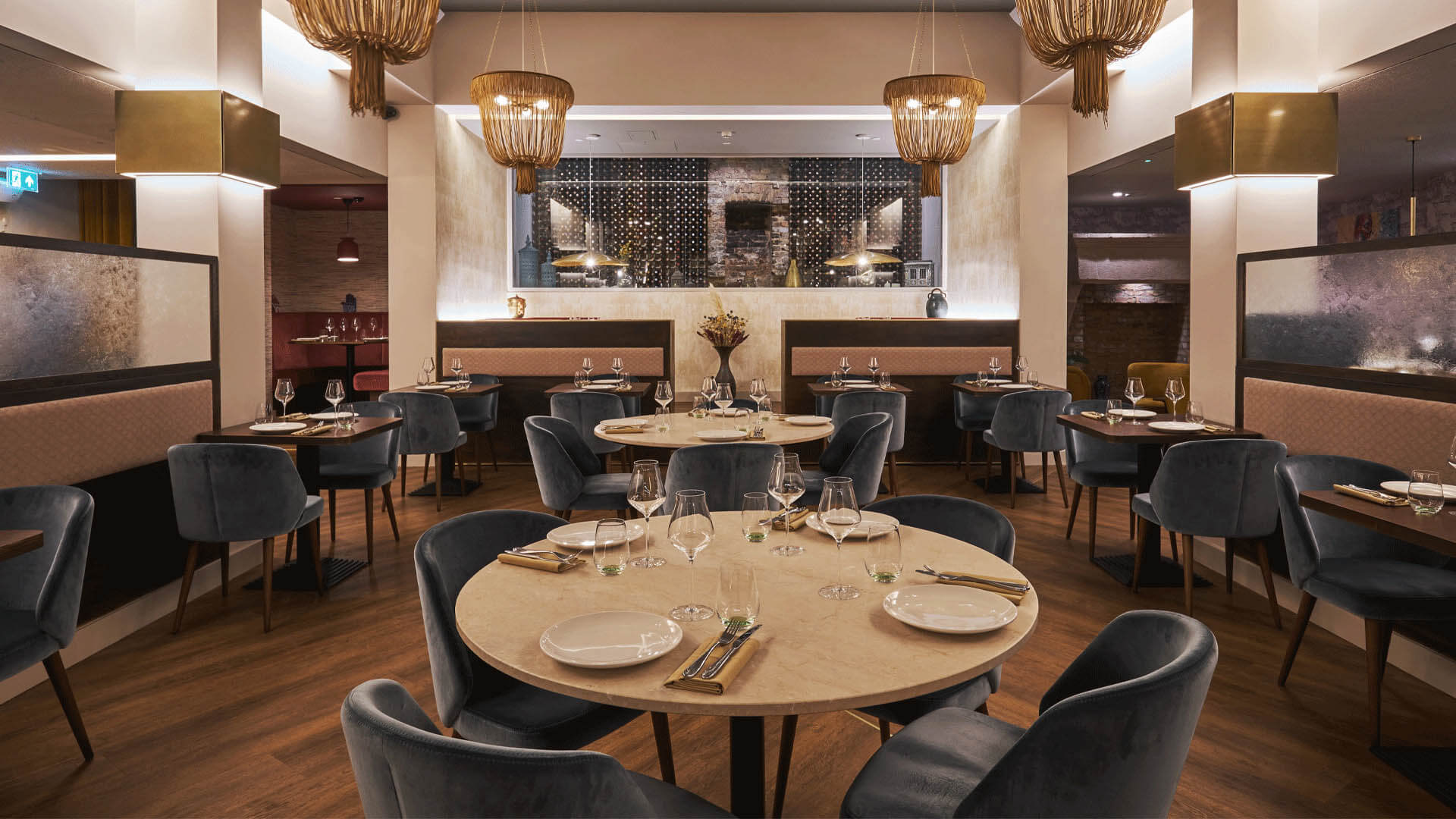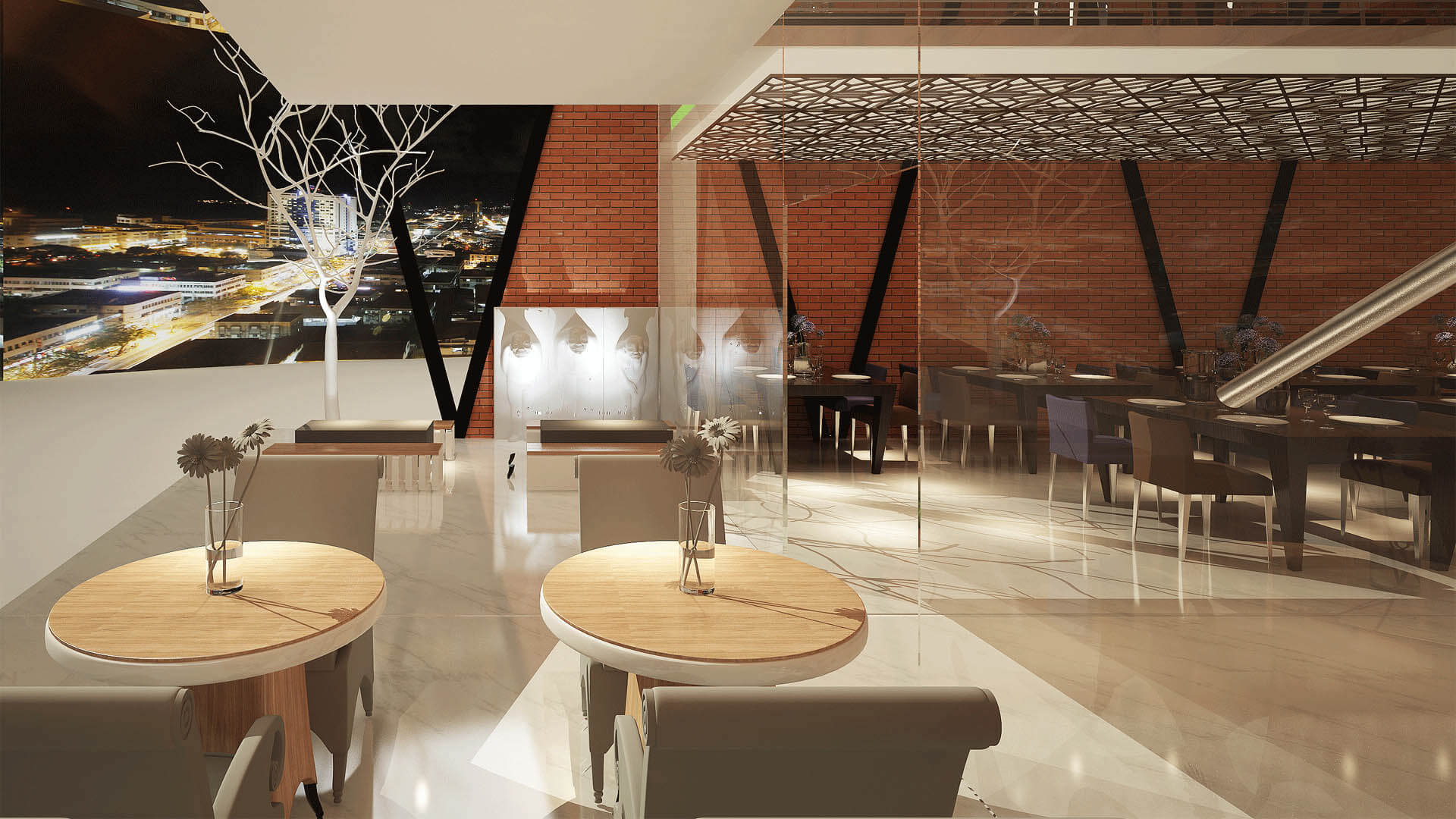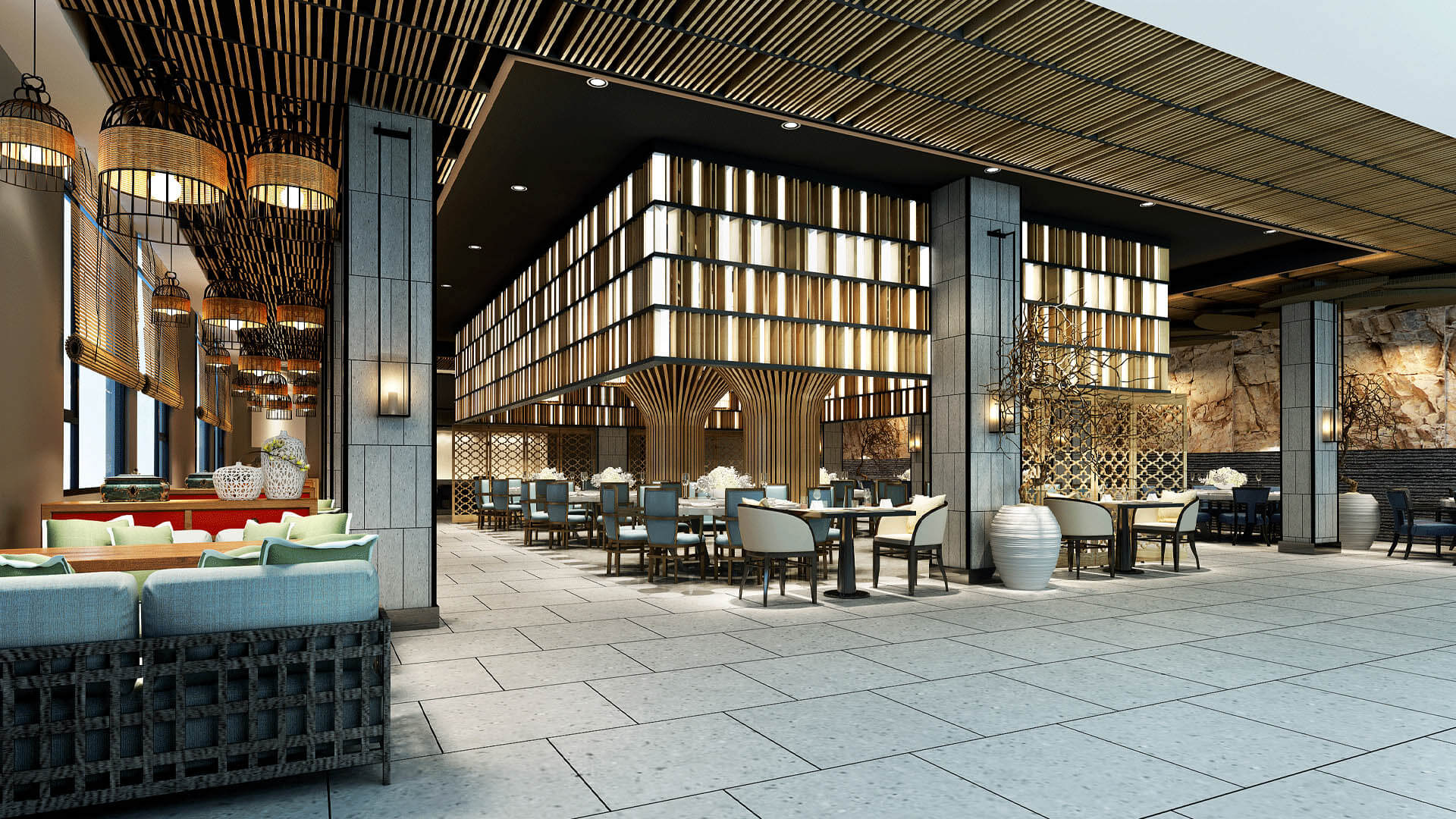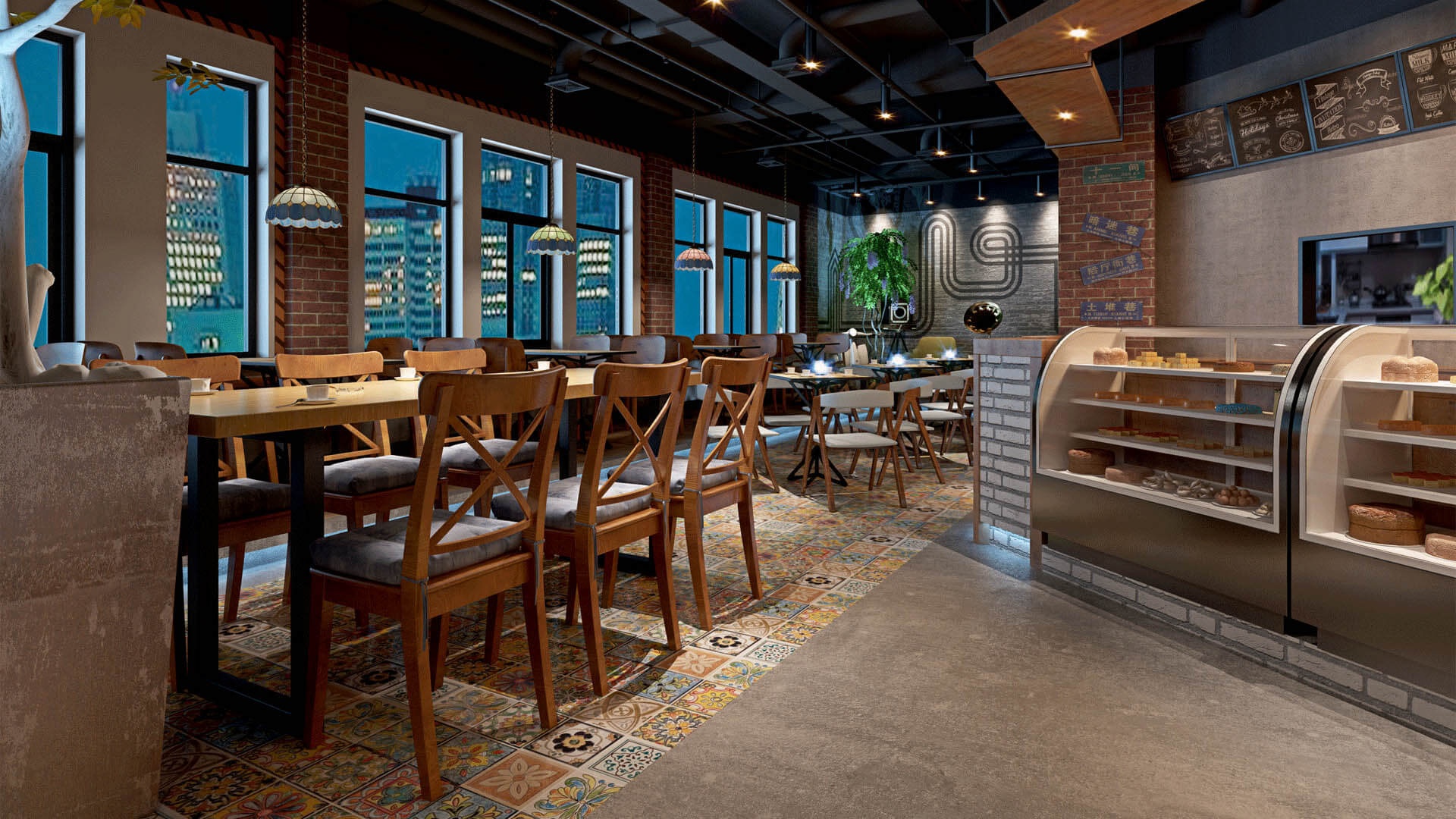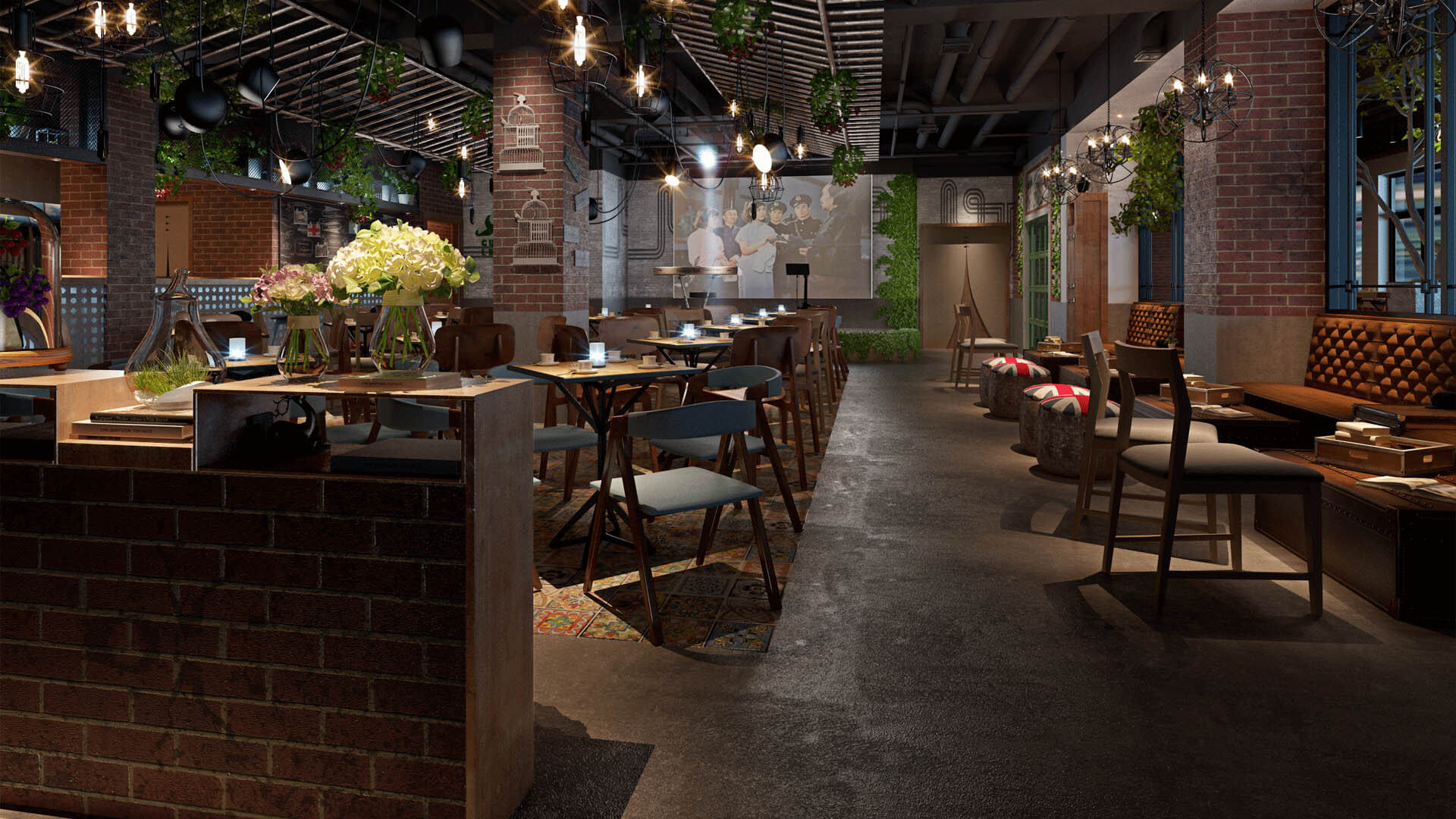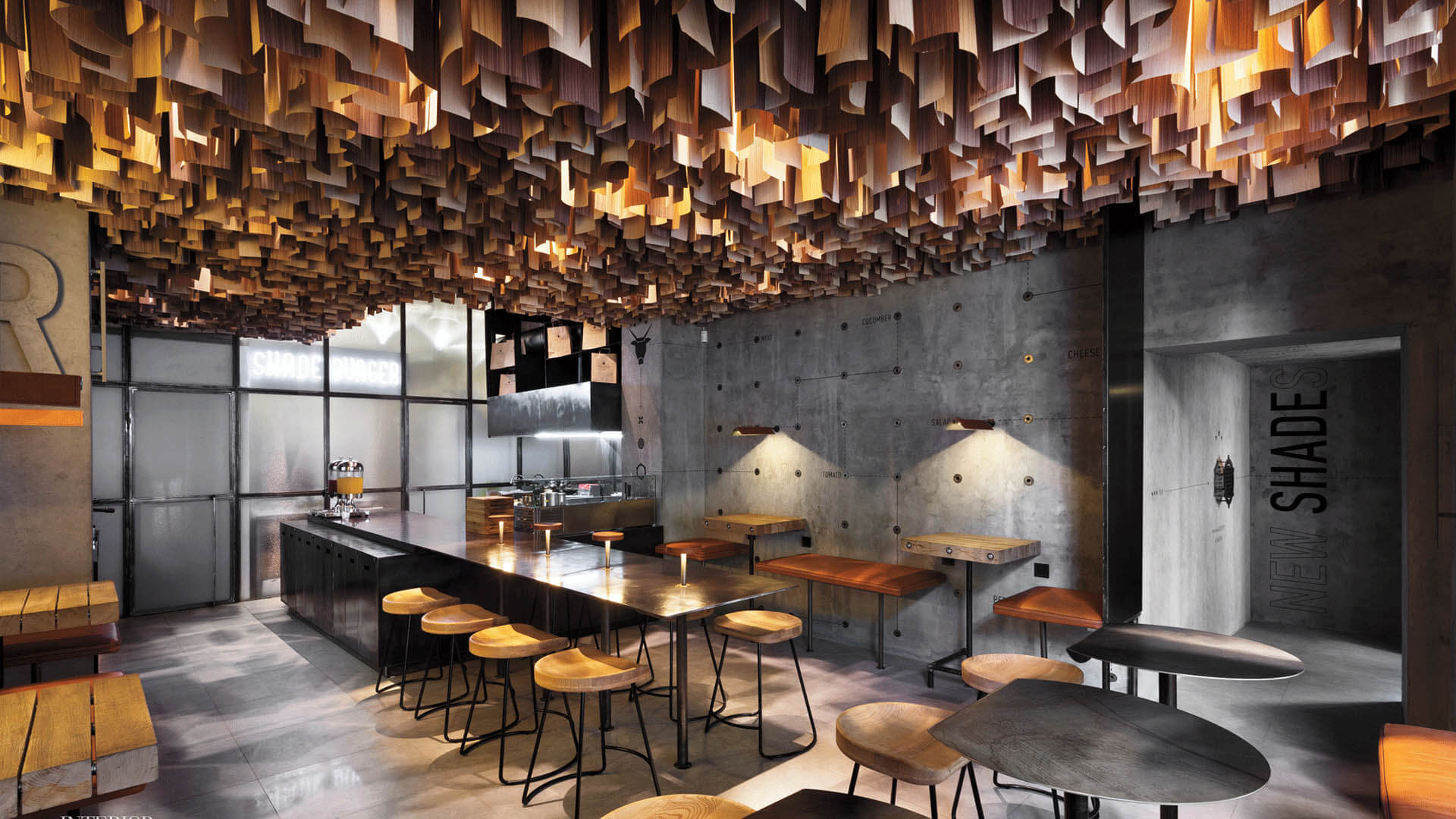Use Of Color In Conjunction With Culture
Color palettes in Indian restaurant interior design vary based on cultural background and restaurant style. Indian restaurants use common color schemes based on different cultural backgrounds. Here are some examples.
North Indian: Red, orange, gold, and brown colors are often used in the interiors of North Indian restaurants & South Indian Restaurant Designs. These colors mean warmth, comfort, and hospitality.
South Indian: South Indian restaurants often use bright colors like green, yellow, and red to reflect the region’s vibrant culture. Blue is also a popular color to reflect the coastal regions of South India.
Punjabi: Punjabi restaurants often use colors like red, gold, and green to reflect the rich and vibrant culture of Punjab.
Mughlai: Mughlai restaurants often use rich colors like dark red, blue, and green. It reflects the opulence and grandeur of the Mughal era. Gold and silver colors represent luxury.
Gujarati: Gujarati restaurants often use bright colors like yellow, orange, and green. It reflects the vibrant and festive nature of Gujarati culture.
A Reflection Of Traditional Indian Style
Small Indian Restaurant designs often incorporate traditional Indian style to create a pleasant and inviting environment for customers.
Colors: Indian restaurant interiors often incorporate traditional Indian colors such as red, orange, yellow, green, and blue. These colors represent Indian culture. It promotes positivity and happiness in Indian restaurant interiors. There have uses of many colors to decorate Indian Restaurant Wall Designs.
Textiles: Indian Restaurant Interior Design often incorporates textiles such as colorful and patterned fabrics, tapestries, and curtains. These intricate designs of textiles add a touch of beauty to the space in Indian Restaurant Interior Design.
Lighting: For Indian Traditional Restaurant Interior Design, uses of Indian lamps such as diya lamps, lanterns, and chandeliers are often used to create a traditional Indian look.
Furniture: Traditional Indian furniture such as wooden chairs, tables, and benches are often used in Indian restaurant interiors.
Use Of Brass And Copper
Brass and copper are popular materials used in interior design for modern Indian restaurants. These metals have a long history in Indian culture and are often associated with luxury, royalty, and opulence.
Brass and copper lamps, lanterns, and chandeliers can add a pleasant and inviting glow to Indian restaurant interiors. These accessories such as wall art, vases, and sculptures add a touch of elegance and sophistication to Indian restaurants. Brass and copper tableware such as plates, bowls, and cups add a touch of luxury and opulence to serving food.
Indian restaurant furniture also incorporates brass and copper. The use of brass and copper on chairs, tables, and other furniture adds a touch of glamor and aesthetics to the space. Brass and copper barware such as cocktail shakers, strainers, and jiggers add luxury and glamor to Indian restaurant bars. Circle Interior Limited is the top architectural firm with 13 years of experience providing this Indian restaurant designing service in Dhaka, Bangladesh using their technology.
Addition Of Religious Symbols
Incorporating religious symbols into Indian Restaurant Interior Design is a common practice. It showcases India’s rich cultural heritage and reflects its ethnic identity. The restaurants create a family atmosphere for the customers by reflecting the religious symbols of the ethnically orthodox Indians.
Om Symbol: The Om symbol is considered the most sacred symbol of Hinduism. It is believed to represent the universe and the divine. It is often displayed inside Indian restaurants as a way to bring positive energy and spirituality into the space. Symbols are used for making unique designs at Interiors Design For Indian Restaurants.
Swastika Symbol: The Swastika is an ancient symbol that has been used in Hinduism for thousands of years. People believe that it represents good luck and prosperity. Restaurants display it as a symbol of success.
Ganesha Symbol: Lord Ganesha is one of the most revered deities in Hinduism. People know him as the remover of obstacles and believe that he brings prosperity and success. Indian restaurants often display this symbol as a representation of overcoming obstacles.
Diya Lamps: Hindu religious ceremonies commonly use diya lamps, which are small oil lamps. People believe that the Mars lamp brings positive energy and light around.
Atmosphere Of Traditional Indian Architecture
Interior design for residential areas in Indian restaurants often reflects traditional Indian architecture in many ways. The interiors of Indian restaurants often reflect the vibrant colors in Indian architecture. They use bold colors like red, orange, and yellow on walls, furniture, and decor to create an inviting and pleasant atmosphere.
Indian architecture is famous for its intricate patterns and designs. which are popular in designs for large Indian restaurant spaces. You can find these patterns on textiles, wallpaper, and even on restaurant ceilings and walls. Indian Restaurant Ceiling Design can make your ceiling more beautiful. Indian Restaurant Interior Design often reflects traditional architecture by incorporating natural materials such as wood, stone, and clay. Wooden furniture, stone floors, and earthenware are common elements of many Indian restaurant designs. Arches and pillars are common elements of traditional Indian architecture. Indian restaurants often incorporate them into commercial interior design.
Use Of Textiles Like Colorful Sarees And Clothes
Colorful textiles play an important role in the interior design of Indian restaurants. India has a rich textile heritage, with an abundance of fabrics, designs, and techniques that reflect the country’s diverse culture and heritage. To enhance the interior design of an Indian restaurant, these textiles help in a variety of ways, including tablecloths and napkins, wall hangings, and decorative items.
Indian Restaurant Design Ideas incorporate textiles to create textures and patterns. Hand-worked fabrics, for example, add intricate and eye-catching beauty to tablecloths, curtains, and other decor elements.
Colorful textiles help create a more comfortable environment. They use soft, plush fabrics on chairs and dining areas to create a comfortable seating area
Fusion With Modern Design
In recent years, architectural design for Indian restaurants has seen a trend of combining traditional and modern design elements. This fusion creates a unique and visually appealing environment, blending India’s rich cultural heritage with modern design.
Materials are one way of mixing traditional and modern design in Small Indian Restaurant design. It combines traditional Indian materials such as wood, stone, and clay with modern materials.
Glass, metal, and concrete to create visually appealing spaces for Indian Restaurant Decor.
Furniture and decoration incorporate traditional and modern materials. Traditional Indian furniture such as low seating and carved wooden furniture combined with modern furniture such as sleek metal chairs and tables create a unique look.
When combining traditional and modern design elements, it is important to strike a balance between the two. Too much traditional design makes a space feel outdated, while too much modern design makes a space feel lifeless in Indian Restaurant Interior Design.
Combination Of Mural And Painting
Indian decoration is famous for its colorful and aesthetic culture, and restaurants incorporate artwork into the design to reflect the industry.
Murals help to create a focal point or focusing zone, whether it’s a large-scale object or a small, intricate design that makes the space unique. Murals depict Indian cultural and historical themes, such as mythological scenes or traditional dances that add a modern touch. Painting helps to enhance the beauty of the restaurant. They create aesthetic designs by displaying them together or separately throughout the space.
The combination of murals and paintings creates a dynamic and aesthetic layer that makes the space visually appealing in the interior design of a large Indian restaurant. The combination of murals and paintings creates a pleasant atmosphere, be it a lively and colorful environment or a more serene and peaceful environment for South Indian Restaurant Design. Incorporating artistic murals and paintings in the interior design of an Indian restaurant creates a unique atmosphere for customers. In this case, you can trust Circle Interior Ltd, one of the best Architecture agencies in Dhaka, Bangladesh designing Indian-style restaurants in this city.
Wide Open Space
Facilitating wide open spaces is an important factor in Indian restaurant interior and exterior design. Open spaces can create a welcoming and comfortable environment for customers. Through Indian Takeaway Interior Design, allowing them to move freely and enjoy their dinner without hindrance or restriction.
Creating areas designated for specific activities, such as a bar, a lounge, or a private dining room, can provide customers with a variety of options for dining and socializing. These areas can be decorated with Indian Traditional Restaurant Interior Design and furniture, creating a distinct atmosphere and mood.
A Reflection Of Different Ethnic Styles
Indian Restaurant Interior Design includes different styles and themes depending on the specific cultural influences and preferences of the restaurant owner.
Traditional: This style usually includes ornate and colorful elements such as textiles, carvings, and wall art. Includes bright colors like red, orange, and gold and intricate patterns and designs.
Modern Indian: Sleek and contemporary design elements define this style, including simple furniture with clean lines, minimal decor, and neutral colors.
Fusion: A fusion style can combine traditional Indian elements with other design influences such as industrial or bohemian style to create a unique look.
Regional: The cuisine-inspired interior design reflects regional influences depending on the particular region of India. For example, a restaurant featuring South Indian cuisine might incorporate elements such as temple-inspired sculptures or colorful sarees into its design.
In conclusion, Indian Restaurant Interior Design plays an important role in creating a warm and inviting environment for customers to enjoy the cuisine and culture. A well-designed restaurant interior dining experience can contribute to the overall success of the business. It is important to consider interior design costs as part of the overall budget for starting and running a restaurant. By investing in well-thought-out and well-executed interior design, restaurant owners can create a space that not only attracts customers but also helps build their brand and reputation in the competitive restaurant industry.







